The plugin glossary provides a back-office tool for defining glossary words.
- Tool presentation
- Add a definition
- Add a definition from the online editor
- Customized theme for a glossary definition
Tool presentation
Click on the Glossary button on the Home to open the Glossary tool

This tool takes the form of a table of existing definitions, sorted by letter.
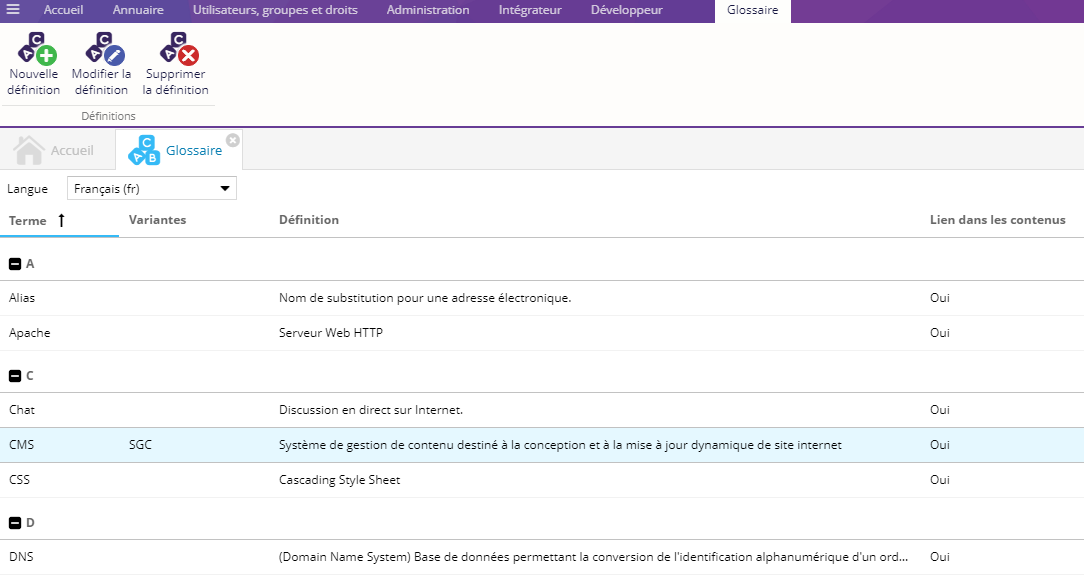
Each glossary is site- and language-specific.
Add a definition
Choose a language from the drop-down list at the top of the tool.
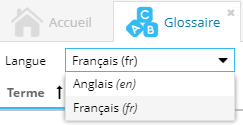
Click on the New definition button to add a new definition to the glossary.
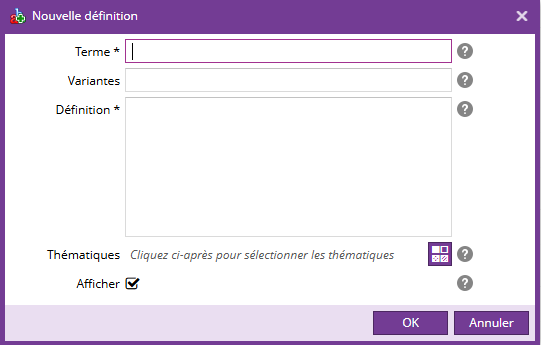
Fill in the following fields:
- Term: The word to be added to the glossary.
- Variants: Alternative terms for your word, separated by commas (feminine/plural form, verb conjugation, etc.).
- Definition: The definition of the word.
- Themes: The theme associated with the glossary word
- Show: Check this box to highlight occurrences of this word (and its variants) in the content of your pages. A tooltip will display the definition of the word on mouseover.
The settings window is identical when modifying a word.
Select a word and click on the Modify button to modify a word in the glossary.
Select a word and click on the Delete button to remove a word and its variants from the glossary.
Add a definition from the online editor
You can also add a term to the glossary directly when editing content.
In editing mode, select the term to be added and click on"Add to glossary".

Customized theme for a glossary definition
Custom themes are available from glossary version 2.15.0 onwards.
To create custom themes, you must have the "Manage themes" right (Users, groups and rights).
The glossary's Themes tool lets you create, modify or delete a theme.
These customized themes are specific to the glossary.
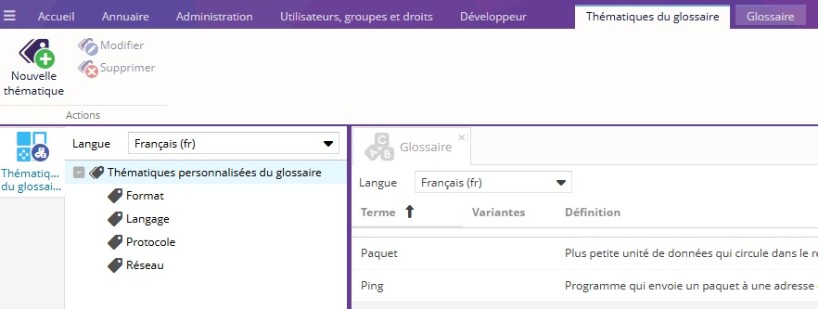
Create a custom theme
Click on the Glossary themes tool in the Glossary tab
Click on the New theme button

Enter the name of the theme and a description if necessary, then click on OK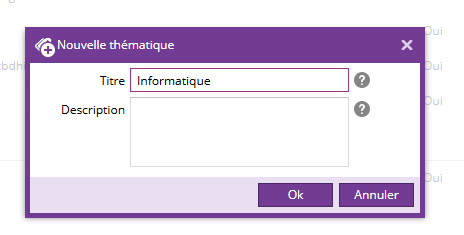
Newly created themes appear under the "Customized glossary themes" node.
For modify a themeClick on the desired theme, then click on Edit.
For delete a themeclick on the desired theme, then click on Delete.

Add a custom theme to a definition
Create a definition according to the methodology presented at the beginning of the document
When creating, click on Themes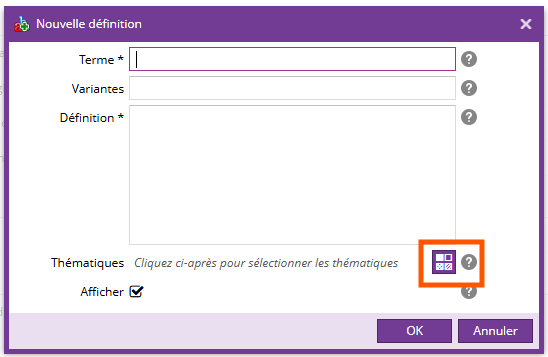
Add the desired theme
When adding a theme, a new pop-up appears to select the theme: 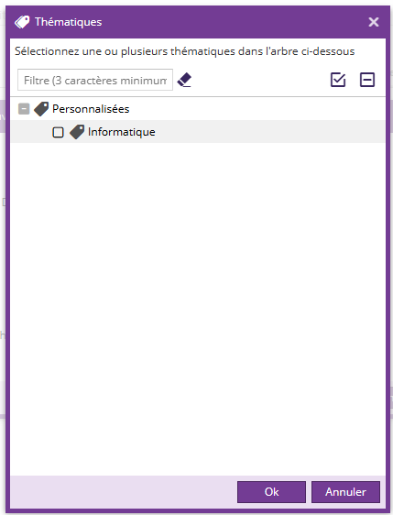
Click on Ok to validate the addition of the theme
To add a theme to an existing definition, select the definition and click on the Modify button.